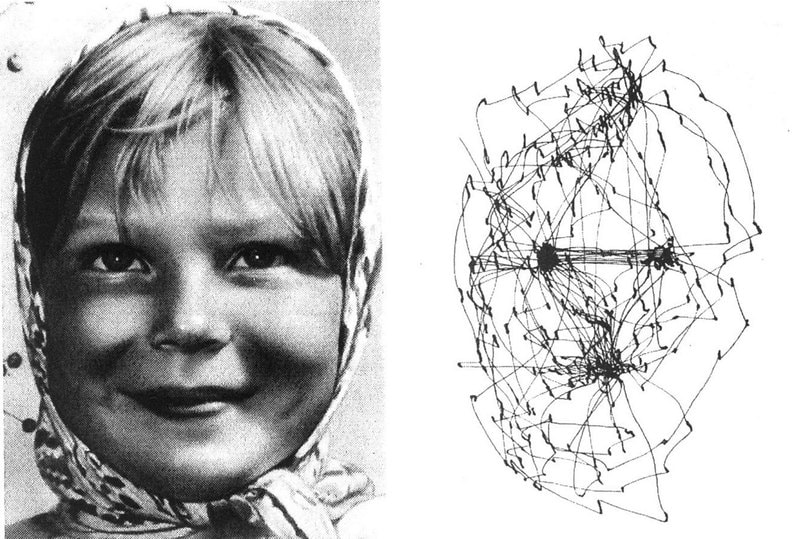One of the enduring features of Yarbus’s investigations is the pattern of eye movements when viewing faces (or, more accurately, pictures of faces). His record of eye movements over the magazine picture of Girl from the Volga has been widely reproduced, and that for the head of Queen Nefertiti was the basis for the cover illustration of the Russian edition of the book. Yarbus wrote: “When looking at a human face, an observer usually pays most attention to the eyes, the lips, and the nose. The other parts of the face are given much more cursory consideration”. Because the eyes and lips are the most mobile and expressive features of a face Yarbus considered that “it is absolutely natural and understandable that the eyes and lips attract the attention more than any other part of the human face”. Yarbus was surprised to find similar concentrations of fixations on a picture of a lion’s head and a sculpture of a gorilla.

“Girl from the Volga. Record of the eye movements during free examination of the photograph with both eyes for 3 minutes”
The characteristic concentration of eye fixations to the eyes, nose and mouth has become a canon of face research although there are large individual differences in the scan paths adopted and cultural differences have been detected. In Yarbus’s experiments, the time of viewing the faces was much longer than the exposure time needed for recognition. According to many recent studies, successful face perception and recognition could require less than a second, i.e. 1-3 gaze fixations could be enough. Moreover, it has been shown that “gaze anchoring” sufficient for recognition cannot beat the eyes, lips, nose and other informative details of the face: fixations near the face can also be effective. These data indicate that the role of eye movement patterns (scan paths) in face recognition was overestimated by Yarbus and his followers.